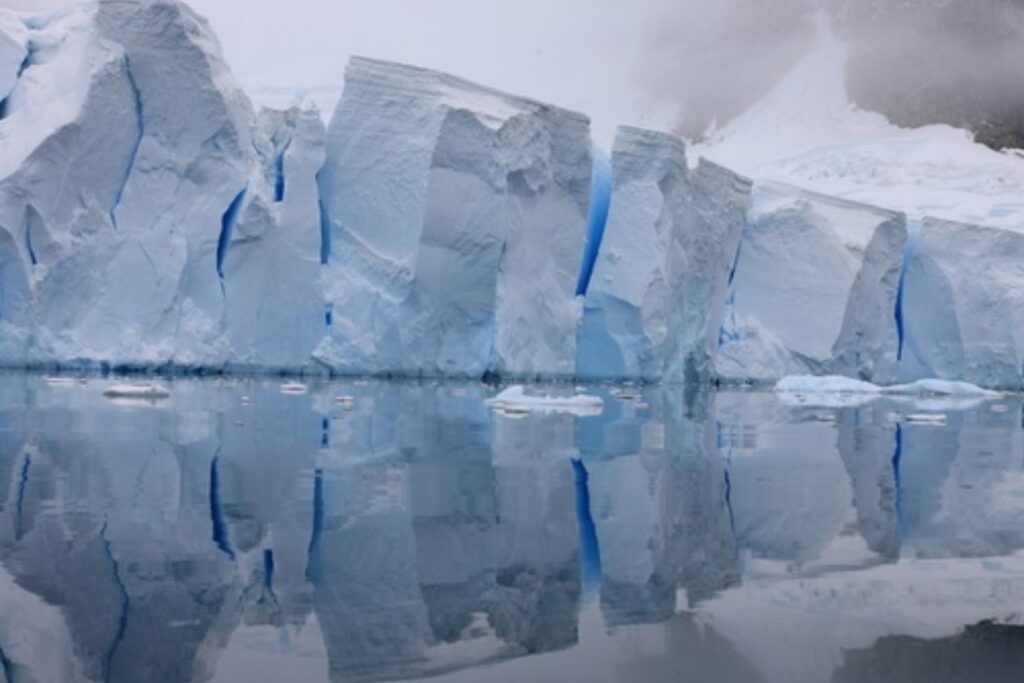The Intergovernmental Panel on Climate Change (IPCC) report on cryosphere and oceans released this fortnight confirmed all the worst fears scientists had about our warming oceans, glaciers and ice caps. Yes, the waters are rising, the ice is melting, but with radical action, the catastrophe Earth is hurtling towards can be averted, the study stated. That process has definitely started. Case in point: Reports this fortnight that part of a glacier on Europe’s highest mountain, Mont Blanc, is at risk of collapse. Authorities have closed roads and evacuated Alpine hamlets.
According to the IPCC report, the need of the hour is deep, immediate carbon emission cuts. Some of the alarming predictions made by the study, if emissions are not drastically reduced, include the sea levels could rise by one metre (3.3 feet) by 2100 – 10 times the rate in the 20th century. The study also predicted thawing permafrost in places like Alaska and Siberia could release vast quantities of greenhouse gases, potentially unleashing feedback loops driving faster warming. Closer home, in the Himalayas, the study stated glaciers feeding ten rivers, including the Ganges and Yangtze, could shrink dramatically if emissions do not fall, hitting water supplies across a swathe of Asia.
Floods in Patna, UP kill 148 as India records highest rainfall in past 25 years
India recorded its highest rainfall in the past 25 years this monsoon, the India Meteorological Department (IMD) said with 1,600 deaths reported across the country so far. The country’s northern states of Patna and Uttar Pradesh were inundated with heavy rainfall and subsequent flooding this fortnight, killing at least 148 people. In Chhattisgarh, incessant rain forced a swollen river to change course and enter a coal mine, damaging it completely.
After a slow start, India is set to end the monsoon season ‘above normal’ with 7% more rainfall than usual this year. Monsoon in the country usually begins on June 1 and ends on September 30. The retreat usually begins in Rajasthan from September 1 onwards, but this time it has continued to rain in this region.
While a longer monsoon season will help restock reservoirs and replenish groundwater, it could also damage summer-grown crops such as cotton, soybean and pulses that are close to harvest. The last time India saw above average rainfall was in 2013.
European satellite to enable hi-res view of greenhouse effect
Europe is all set to launch a satellite that will enable scientists to obtain a high-resolution view of Earth’s greenhouse effect. The satellite will carry a spectrometer to sense the far-infrared radiation coming up off the Earth. “Satellite missions up until now have mostly measured wavelengths in the mid-infrared – that’s shorter than 15 microns,” Dr Helen Brindley from Imperial College London and the UK National Centre for Earth Observation told the BBC. “We’re now looking to measure longer than 15 microns which has never been done before from space.”
This enhanced monitoring capacity will give scientists an opportunity to find missing key features in their climate models.
2015-19 warmest five-year period on record, says UN report
A UN report revealed that the average global temperature for the 2015-2019 period is on track to be the warmest on record. The report also concluded that the average global temperature is already 1.1°C above pre-industrial times and 0.2°C warmer than 2011-2015 period. This is alarming because the Paris Agreement aims to limit warming to 1.5°C because, according to scientists, any temperature above that would lead to catastrophic weather events.
The report, United in Science, which took into account the latest climate science by global research organisations such as the World Meteorological Organisation (WMO), also found the global mean sea level rise increased from 3.04 millimetres per year in 1997-2006 to 4 mm/year in 2007–2016.
Climate change could cause drought in 60% of global wheat-growing areas: Study
The staple in every diet across the world – wheat – could be in jeopardy because of climate change. According to a new study, if climate inaction continues, up to 60% of current wheat-growing areas worldwide could see simultaneous, severe and prolonged droughts by the end of the century. What’s worse, the researchers say the risk of drought in wheat production areas is four times what it is today.
Even if warming is limited to 2°C, up to 30% of wheat production areas across the world could suffer through a simultaneous drought. This would not only affect global production, but also push up food prices, the researchers said.
North America’s bird population declines by 3 billion in 50 years: Study
Birds in the US and Canada are ‘in a crisis’ according to a new study, which stated North America has lost more than a quarter (29%) or 3 billion of its bird population since 1970. There were being lost across every type of habitat – from grassland to coasts and deserts. While the study did not point to the exact reason for the drastic decline, it did conclude that there were multiple factors, a major one being the loss of habitat due to human activity.
‘Cooling’ aerosol particles failing to keep up with global warming, says study
Aerosol particles, which are primarily known to cool down the warming effect caused by greenhouse gases, are growing tinier in size and as a result losing their ‘cooling effect’, according to a new study. A major natural source for these aerosol particles are coniferous forests. But industrialisation, mainly agricultural and fossil fuel emissions, are making the aerosol particles even tinier, making it impossible for them to reflect sunlight and cool the warming effect of greenhouse emissions, according to the study.
About The Author
You may also like
Can Private Players Reinvent India’s Forecasting Future?
Polar Geoengineering Projects Unlikely to Stop Melting, May Harm Ecosystem: Report
Inside India’s Struggle to Build a Reliable Early Warning System
Parked Vehicles Significantly Intensify Urban Warming: Report
Quarter of Pledged Emission Cuts at Risk Due to Lack of land-use finance: Report

